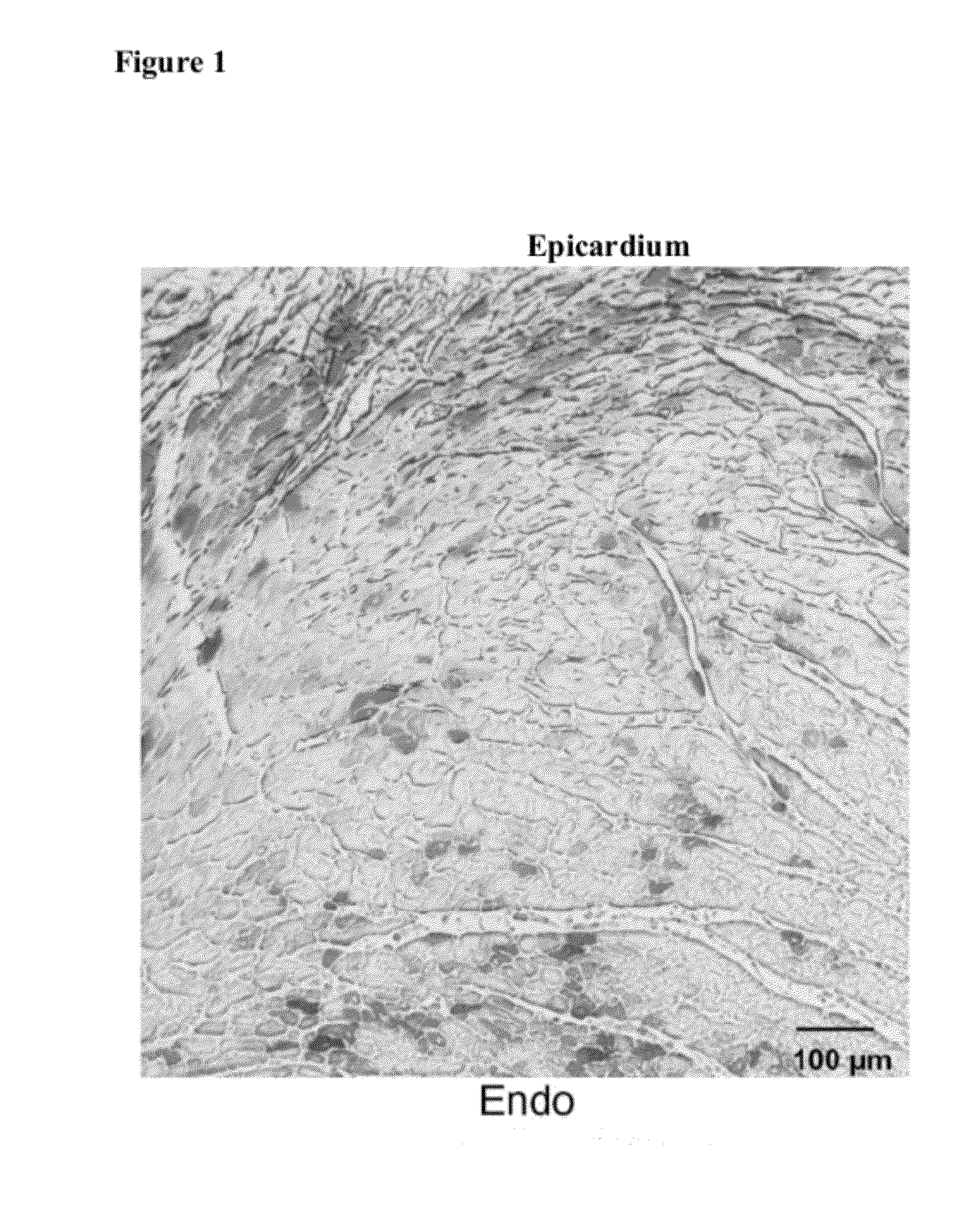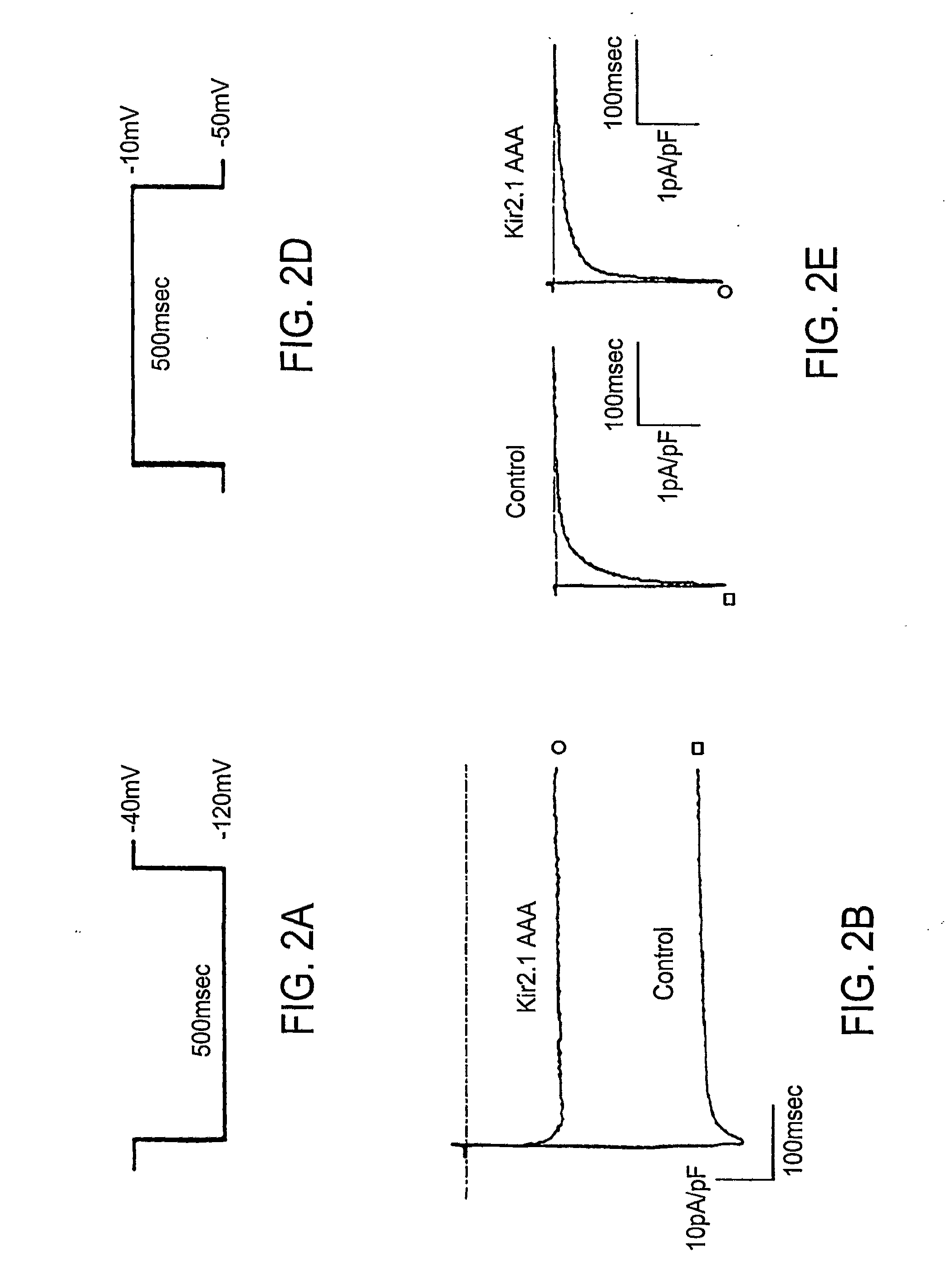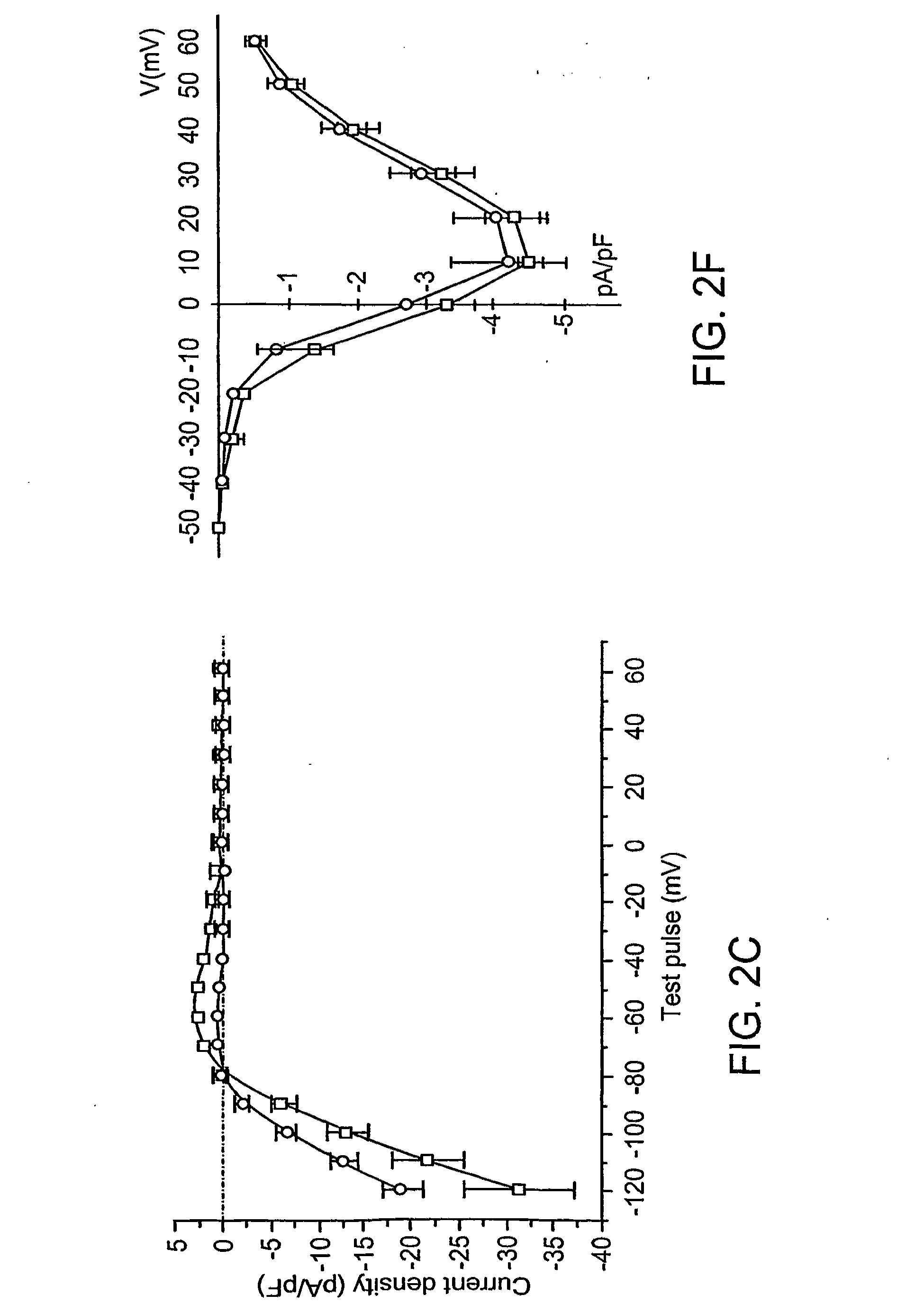Biological Pacemaker
a pacemaker and biotechnology, applied in the direction of viruses, drug compositions, cardiovascular disorders, etc., can solve the problems of significant cost, infection, lung collapse, and inability to fully realize the effect of ventricular valve stimulation
- Summary
- Abstract
- Description
- Claims
- Application Information
AI Technical Summary
Benefits of technology
Problems solved by technology
Method used
Image
Examples
example 1
Effect of Inhibition of Kir2 Channels on Latent Pacemaker Activity of Ventricular Myocytes
Materials and Methods
[0131]Dominant-Negative Effects
[0132]Dominant-negative effects of Kir2.1AAA on IK1 expression were achieved using the approach of Herskowitz (See, for example I. Herskowitz, Nature 329, 219-22; (1987)). The GYG motif, three amino acids in the H5 region of potassium channels that play a key role in selectivity and pore function, were replaced with three alanines in Kir2.1.
[0133]Vectors
[0134]A bicistronic adenoviral vector, encoding both enhanced green fluorescence protein (EGFP, Clontech, Palo Alto, Calif., USA) and Kir2.1AAA, was created using the adenovirus shuttle vectors pAdEGI (D. C. Johns, H. B. Nuss, E. Marban, J. Biol. Chem. 272, 31598-603. (1997) and pAdC-DBEcR (U. C. Hoppe, E. Marban, D. C. Johns, J. Clin. Invest. 105, 1077-84. (2000)) as previously described— The full-length coding sequence of human Kir2.1 (kindly supplied by G.F. Tomaselli, Johns Hopkins Universi...
example 2
The Triple Mutation GYG365-367AAA Rendered HCN1 Channels Nonfunctional
Molecular Biology and Heterologous Expression
[0150]mHCN1 and mHCN2 were subcloned into the pGH expression vector. B. Santoro et al., Cell, 93:717-29 (1998). Site-directed mutagenesis was performed using polymerase chain reaction (PCR) with overlapping mutagenic primers. All constructs were sequenced to ensure that the desired mutations were present. cRNA was transcribed from NheI- and SphI-linearized DNA using T7 RNA polymerase (Promega, Madison, Wis.) for HCN1 and HCN2 channels, respectively. Channel constructs were heterologously expressed and studied in Xenopus oocytes. Briefly, stage IV through VI oocytes were surgically removed from female frogs anesthetized by immersion in 1% tricaine (i.e. 3-aminobenzoic acid ethyl ester) followed by digestion with 2 mg / mL collagenase in OR-2 containing (in mM): 88 NaCl, 2 KCl, 1 MgCl2 and 5 mM HEPES (pH 7.6 with NaOH) for 30 to 60 minutes. Isolated oocytes were injected wi...
PUM
| Property | Measurement | Unit |
|---|---|---|
| membrane potentials | aaaaa | aaaaa |
| membrane potentials | aaaaa | aaaaa |
| membrane potentials | aaaaa | aaaaa |
Abstract
Description
Claims
Application Information
 Login to View More
Login to View More - R&D
- Intellectual Property
- Life Sciences
- Materials
- Tech Scout
- Unparalleled Data Quality
- Higher Quality Content
- 60% Fewer Hallucinations
Browse by: Latest US Patents, China's latest patents, Technical Efficacy Thesaurus, Application Domain, Technology Topic, Popular Technical Reports.
© 2025 PatSnap. All rights reserved.Legal|Privacy policy|Modern Slavery Act Transparency Statement|Sitemap|About US| Contact US: help@patsnap.com



